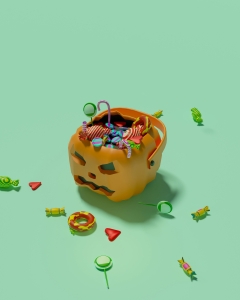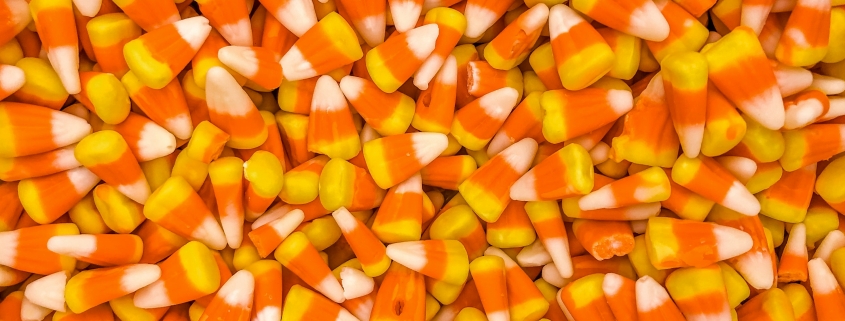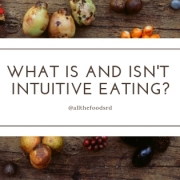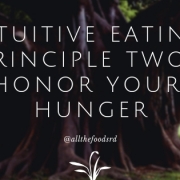How To Handle Halloween Candy
Halloween is approaching soon, and with that comes the fun of trick or treating, haunted houses, hayrides, and pumpkin patches! And for some it also comes with stress over how to handle Halloween candy. As dietitians, we get asked questions like, “How much candy should I let my child eat on Halloween?” or “How do I stop myself from eating Halloween candy?” And you might be surprised by our response. Below are some tips for how to handle Halloween candy in an intuitive way:

Eat regular, balanced meals as usual: I’m sure you’ve heard people talk about “saving up calories” by restricting food before a holiday meal or treat. Restriction before a holiday meal or Halloween night can result in low energy, low blood sugar, irritability, and preoccupation with food, which can set the stage for binge behavior. So, make sure to eat adequate meals and snacks every day, even on holidays.
Call it what it is, candy, not “junk food”: The way we describe food can affect our emotions when we eat that food. If we label foods as “bad” or “junk food,” guilt and shame are commonly the emotions that follow eating those foods. This can have a negative impact on our relationship with food, which then can affect our behaviors with food.
Listen to hunger and fullness cues: Our bodies know how much energy we need from food, and they communicate that with hunger and fullness sensations. Hunger and fullness hormones don’t take a vacation on holidays. So, when it comes to how much candy you should eat, listen to your hunger and fullness cues. Children can do this as well. For children, I like to us the phrase, “Listen to your tummy.” This encourages children to tune into their bodies and increases their confidence in knowing what their bodies need. If you or your child eats an amount that pushes you or them past comfortable fullness, avoid shaming and instead be curious about why you feel that way and how you can “listen to your tummy” better next time.
For those who have trouble with interoception and identifying hunger and fullness cues:
Create a consistent eating pattern by scheduling meals and snacks every 2 to 4 hours throughout the day to keep blood sugar stable and the body fueled. Use visual reminders, like sticky notes, or alarms to trigger mealtimes. Incorporate Halloween candy into meals or snacks as desired. Focus on eating candy at a moderate pace and check in to see how you feel after each piece to determine if you’re satisfied by the amount of candy or if another piece sounds good!
Enjoy Halloween candy on several occasions: Some people make the mistake of only allowing Halloween candy to be eaten on Halloween night. This can create a deprivation mentality, causing you or your child to eat as much as possible for fear that it will be the only time allowed to eat it. It can also lead to sneaking or hiding candy to eat at another time, and these behaviors create a negative relationship with food that could lead to more disordered behaviors. It’s okay to have Halloween candy before and after Halloween. Obviously, we know that eating candy all day, every day is not health-promoting, but you can eat it in a way that allows you to enjoy it while also eating a variety from all food groups. Try including a piece of candy as part of a snack or meal outside of Halloween night. Giving yourself permission to eat Halloween candy on several occasions takes away the deprivation mindset around it.

Eat it mindfully: Mindless eating can result in less satisfaction, overeating, and uncomfortable fullness. When you choose to eat Halloween candy, eat it mindfully so that you can satisfy your taste hunger. Eating mindfully involves tuning into your hunger/fullness cues and your senses as you eat. Notice what it looks like and smells like, and then as you take a bite pay attention to the flavors, temperatures, and textures. Is it hot, cold, or room temperature? Does the temperature change as you chew it? Is it sweet, salty, or savory? Is it crunchy, creamy, smooth, or all three? What is my hunger/fullness after every few bites? Do I want more or am I done? Eating mindfully allows you to fully enjoy the candy and then move on.
By Julie Mason RD/LD








